Why I love islands: beachcombing (sand and shell collecting)
Last updated on March 21st, 2021 at 12:41 am
Beachcombing is one of my favorite beach activities. Since childhood vacations in Florida with my family, I have been fascinated with shells. Not long ago, I removed the wide rubber bands holding the lid on a large, broken down shoebox filled to the brim with shells collected on Florida beaches throughout my childhood. Its contents brought back memories of returning from vacation eager to identify my treasures by looking them up in library books on shells.
While not all beaches I visit are filled with a plethora of shells, I can usually find a special shell or two as I walk along the shore, or a small piece of coral, that I tuck into my bag to add to my collection. One of my favorites is the keyhole limpet. They’re not that common, so when I find one, it’s a treasure.
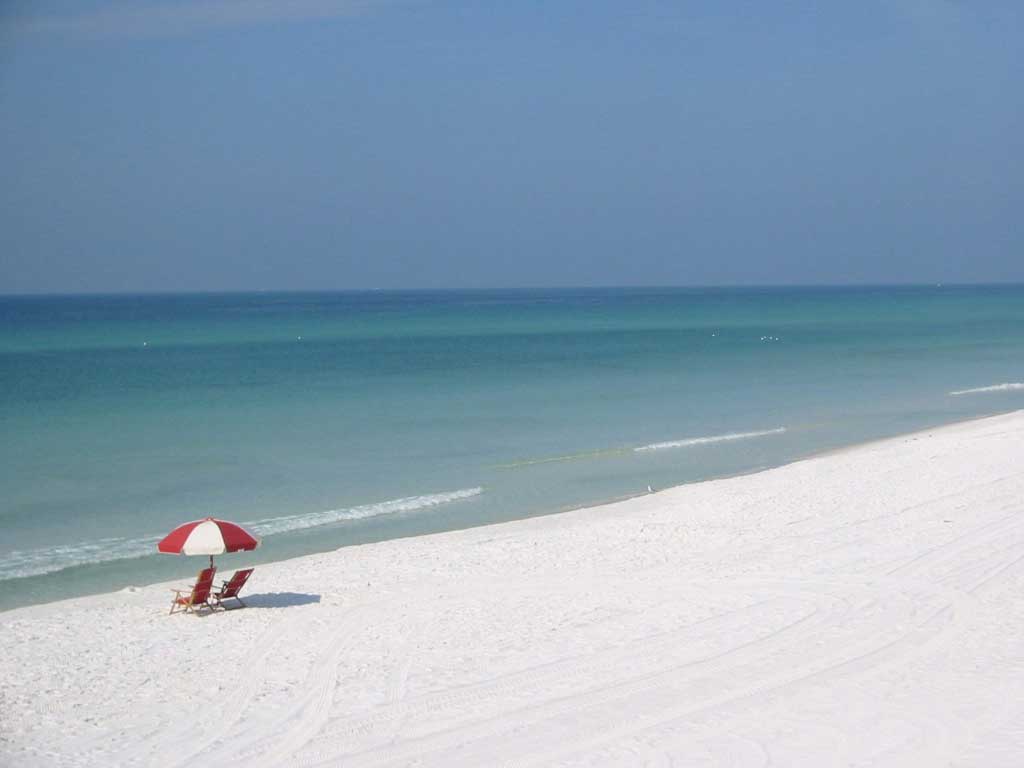
Destin, Florida’s sugar white sand beach is part of a 100-miles of glistening white beaches stretching from Panama City to Pensacola, called the Emerald Coast. (© Debbra Dunning Brouillette)
Some of the sugar-white sand found on the Florida Panhandle also found its way back to my Indiana home during my childhood, but it wasn’t until years later that I began a sand collection. Friends and family who have been to my home have seen my little spice bottles filled with sand of all colors and textures.
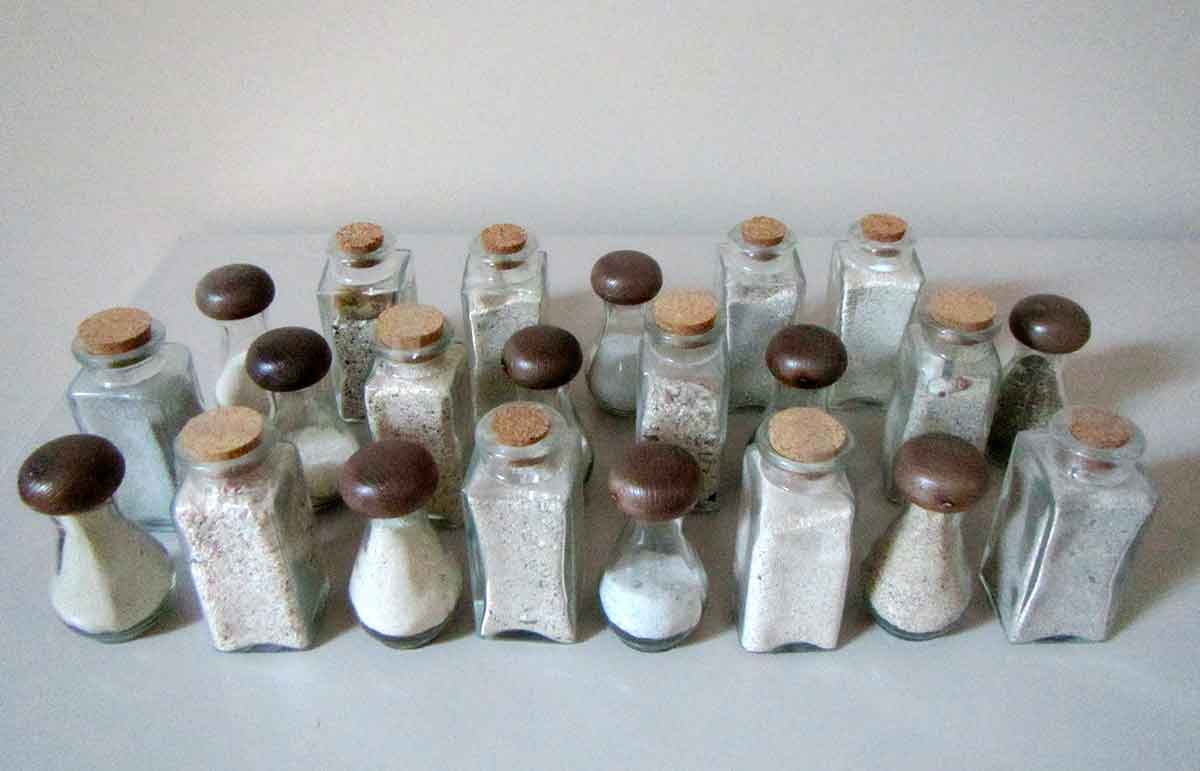
Part of my sand collection, gathered together for the photo. Other sand samples are in Ziplok bags, waiting for glass bottles to be purchased so they can be added to the display. (© Debbra Dunning Brouillette)
The bottom of each bottle is labeled with the name of the island where I collected my sample. Before the days of digital photography, I used to fill empty film containers with sand, but now I always pack a few extra zip lock bags for collecting sand from the beaches I visit. Sometimes small shells or bits of sea fan and coral find their way into the bag, too.
While I am a more casual collector, some people have taken sand collecting to another level, actually logging their sand samples in detail, not only noting the general location the sample comes from but the exact location and tide mark location. Serious “technical collectors” also record sand color, grain size, and texture, ranging from very coarse to very fine, and display their samples in racks or bottles of the same size and material.
If you are interested in learning more, check out the U.S. based International Sand Collectors Society (sandcollectors.org), which also has a Facebook Group, and The World Atlas of Sands, another website devoted to sand. Although it appears the last post was in 2012, there is a lot of information about sand collecting and images of collections.
There have only been a couple of places where I didn’t bring back sand (or shells) from my travels. One was from my trip to the Galapagos Islands in 2012. I knew that removing sand or anything from the Galapagos was not allowed and strictly enforced, so I didn’t even think about it. The other was in Tobago, on the way back to Trinidad. The Security person inspected my carry-on bag and removed my small bag of sand, saying I wasn’t allowed to bring it back. That, however, is the first and only time Security has located and removed sand from my bag. I usually travel with only carry-on luggage and have not had a problem since, but if I plan to check a bag, I put my sand in it.
If you are thinking of starting a collection, clear glass bottles with stoppers can be found at Pier One, Michael’s, Hobby Lobby or at flea markets and garage sales.
Do you also collect shells and/or sand from the beaches you visit? If so, I’d love to hear from you in the comments. I’d also be interested in hearing if you have had any difficulty bringing back sand or shells from a tropical vacation.


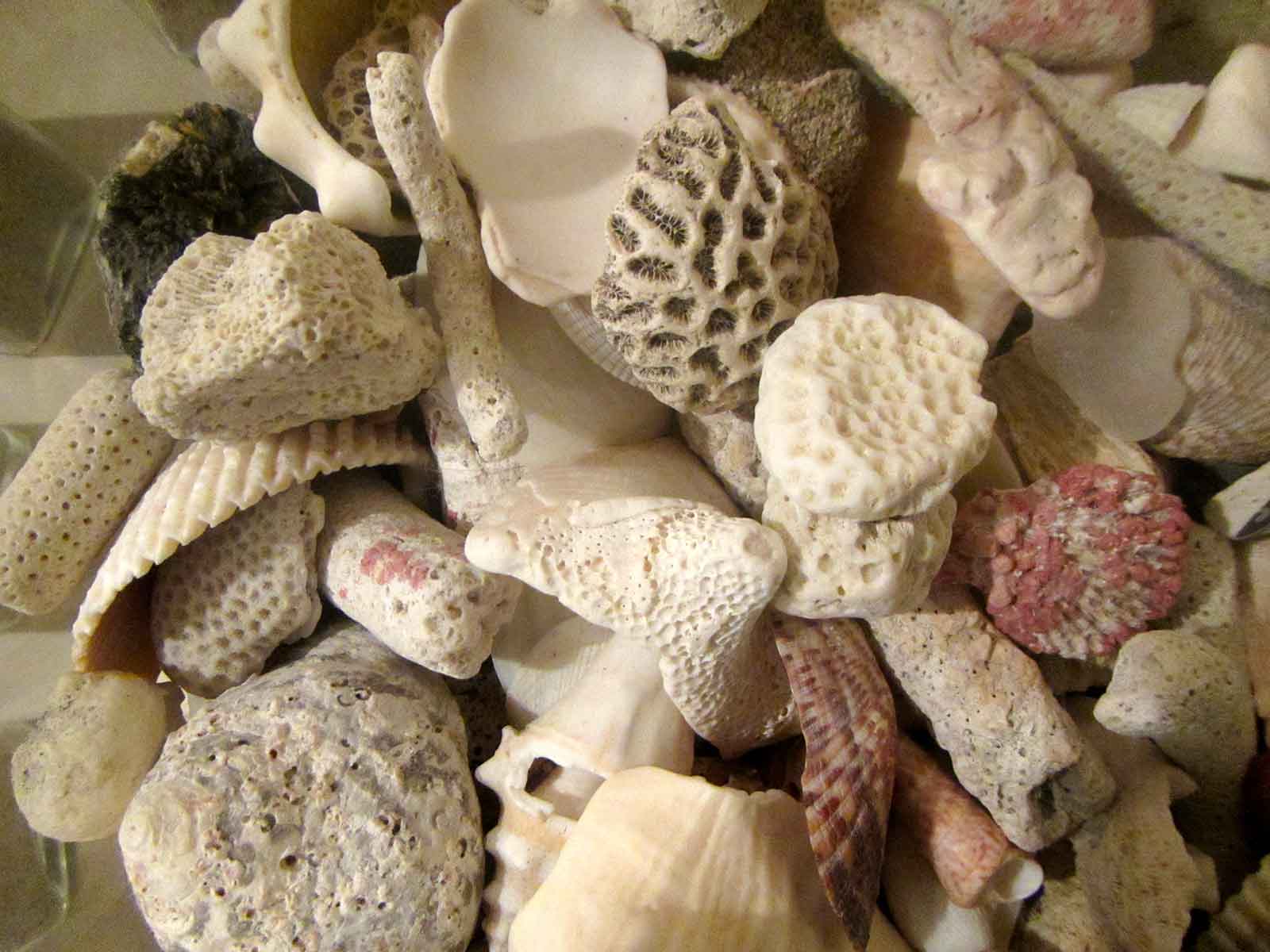
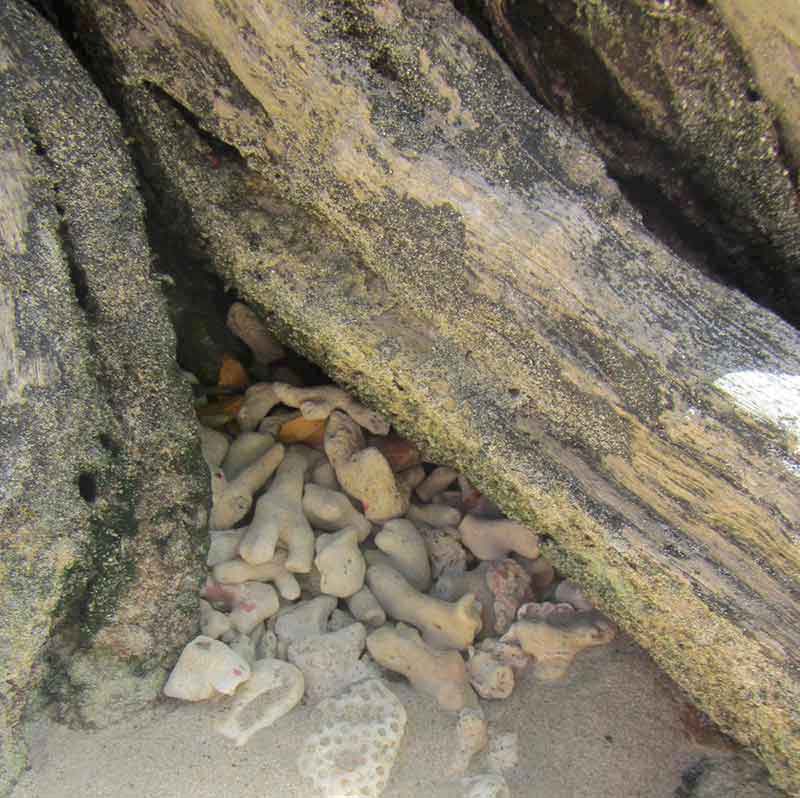
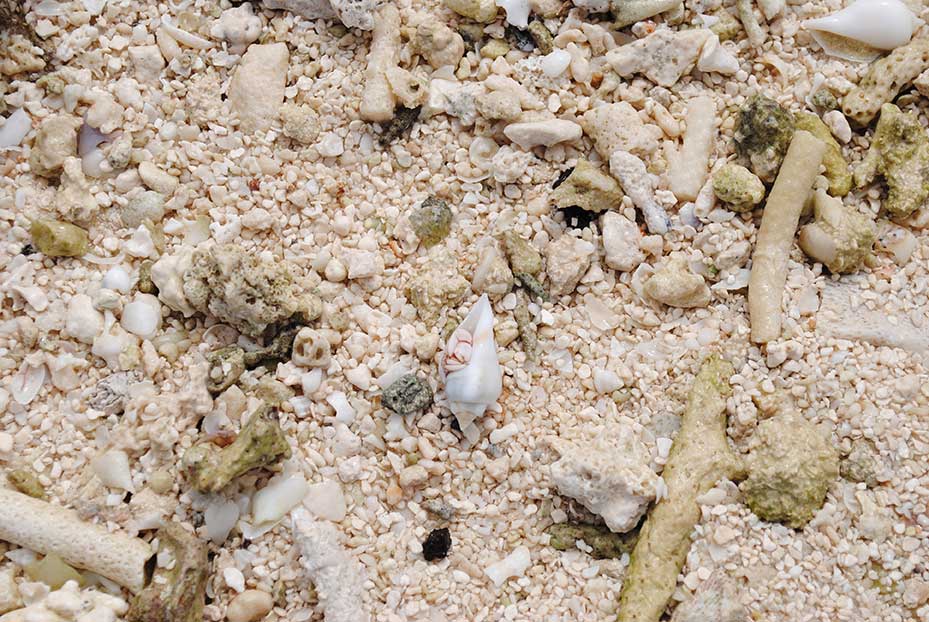
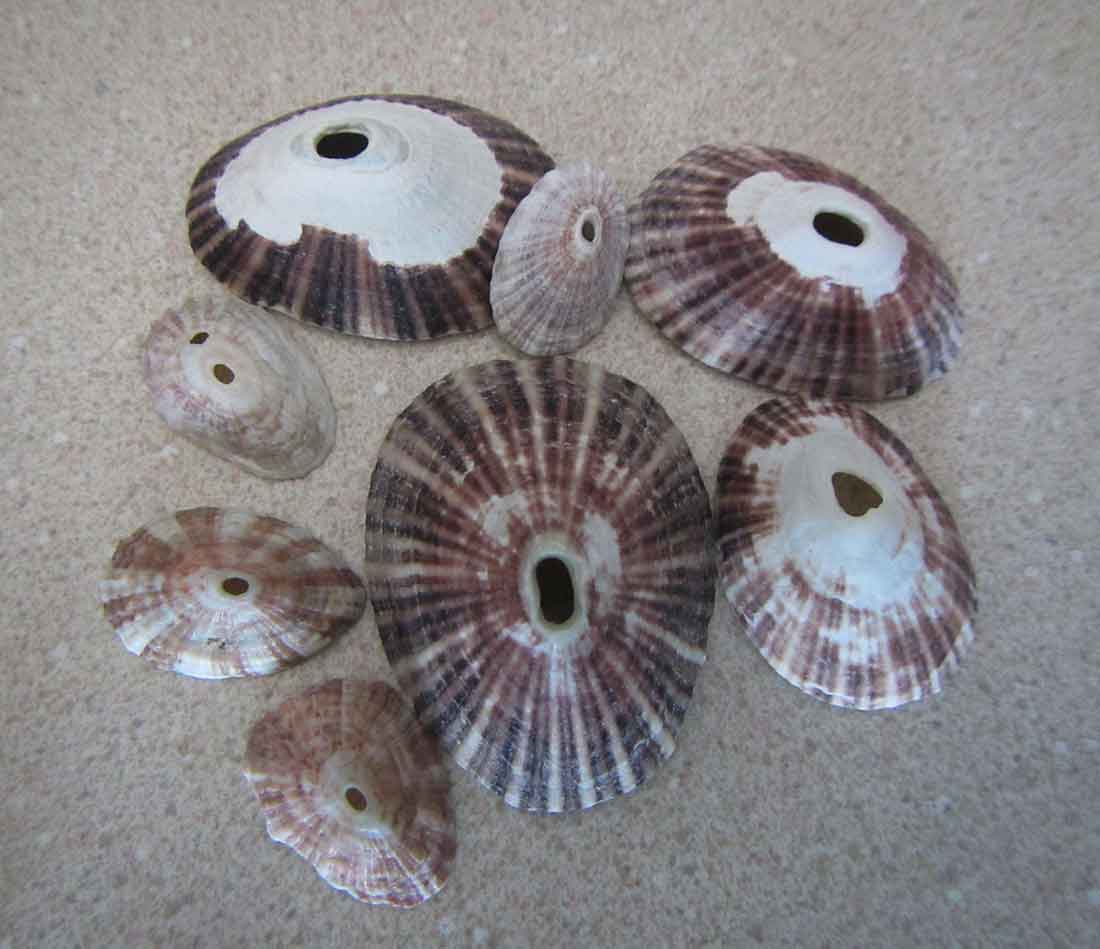
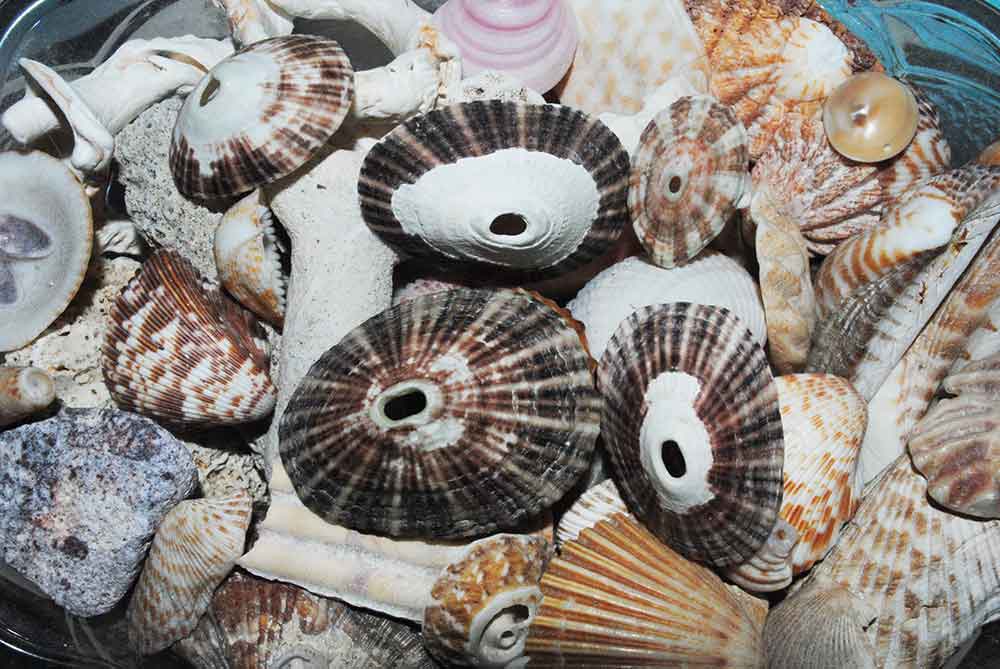
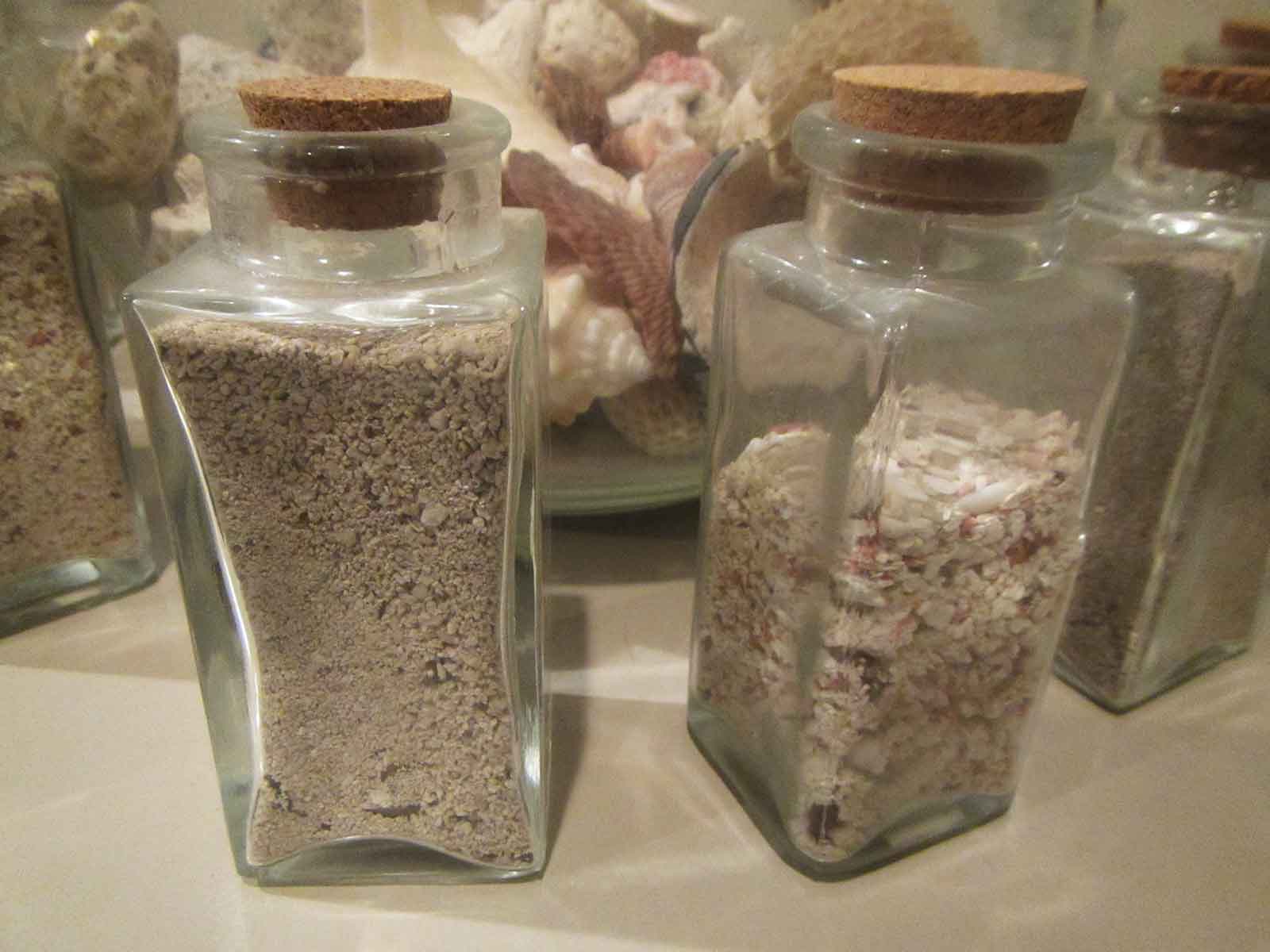
I love collecting shells! So thank you for this post. However, I never really know what to do with them when I get home. They generally just collect dust. Would love to hear ideas from you, or other readers, about cool things to do with shells (akin to you little pots of sand). I’m lacking inspiration 😀
Hello Anna! I’ve displayed shells in glass bowls and bottles. One large, fairly deep round bowl has sand in the bottom with shells placed on top, with my bottles of sand arranged around it. I have a clam shell I use to hold soap and use the purple barnacles (bought, not found) as a toothbrush holder. If you’re crafty, shells can be used to make jewelry, or can be glued onto mirrors or small photo frames. (P.S. Congrats on launching your new website, http://www.igloowomen.com)
I’ve never collected sand (intentionally). However, I began collecting shells as a teenager while living in a Rhode Island. It never even occurred to me to identify or catalogue my treasured finds, unless you consider arranging like-colored, or pattern-specific groupings, in assorted shoeboxes and mesh fishnet bags cataloging! The artist in me just loves them for their sheer beauty! And, by the way, your site is beautiful!
Pingback: Shelling on Sanibel with “Shellebrity” Pam Rambo, Iloveshelling.com – Tropical Travel Girl
I too have a passion for shells, Debbie. In fact I have a great collection of shells that I managed to gather over the years from all the beaches that I have visited. The best ones are from Ouvea, a small island in South Pacific. The island is very remote and there is not much competition for these treasures. I’ve heard that lately they don’t allow tourists to take any shells out of the country, so I guess I was lucky.
I would love to see your collection, Anda, especially the ones you mention from the South Pacific! Have you ever photographed them? I haven’t heard of Ouvea; will have to look it up.
Spice bottles! FABULOUS idea for collecting sand. One of those simple ideas the average person can’t come up with. Thank you!💜
Thanks! Glad you like the idea! Any small bottle works, of course, but spice bottles are a good size. I recently got some small bottles of honey in a gift set and am going to use those, too! Whatever works! Do you also have a sand collection?
Pingback: How I display my sand collection and shells – Tropical Travel Girl